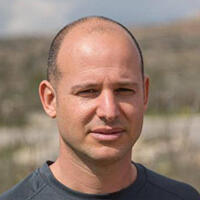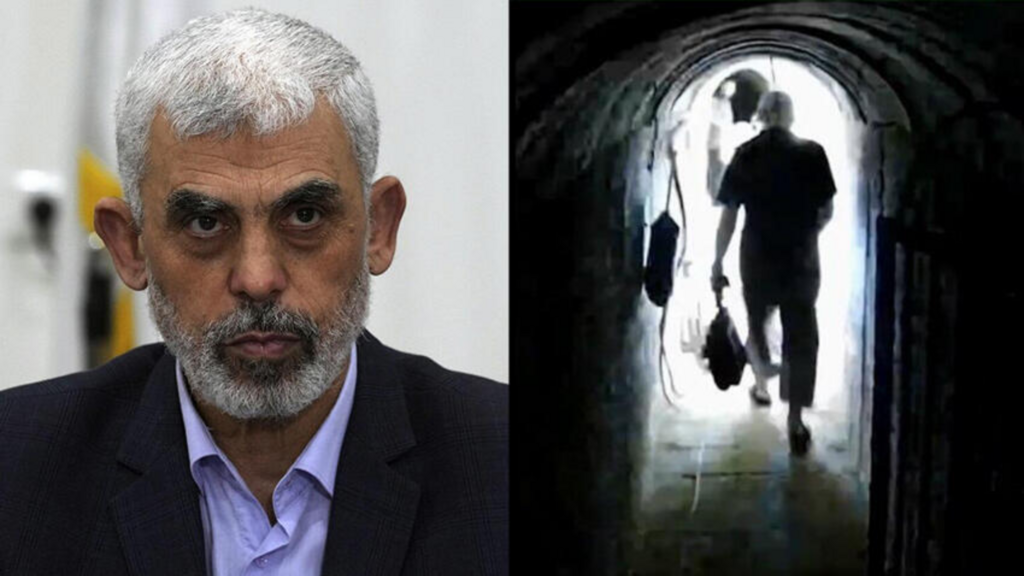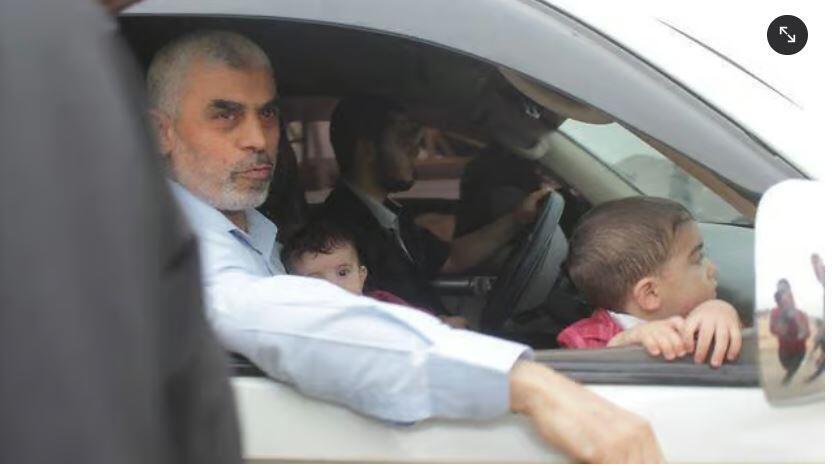Getting your Trinity Audio player ready...
Has Hamas chief and October 7 architect, Yahya Sinwar, taken his last breath? Israel is currently exploring that possibility, as he might have been injured or killed in recent IDF strikes on the Gaza Strip. This comes following reports that he has once again become "unreachable." However, defense officials emphasize there is no concrete information confirming his whereabouts. They also note there have not been any recent targeted strikes in areas where Sinwar's presence was indicated.
In recent weeks, various Arab media outlets have reported that Sinwar sent thank-you messages to several leaders who offered condolences after the assassination of Hamas political bureau chief Ismail Haniyeh in Tehran in July. For instance, Lebanese media recently reported that Sinwar sent such a message to Hezbollah Secretary-General Hassan Nasrallah. A few days earlier, Sinwar reportedly sent a similar note to Algerian President Abdelmadjid Tebboune. This marked the first reported message from the Hamas leader since the massacre on October 7.
The Wall Street Journal recently published an in-depth article on Sinwar's secretive communication methods, which have allowed him to elude Israeli intelligence and avoid capture for over 11 months. Sinwar has managed to communicate with the outside world while keeping his hideout in Gaza's tunnels concealed. According to the article, Sinwar developed these methods during his time in an Israeli prison, relying on a complex network of encrypted messages delivered through a series of couriers, sometimes including civilians in addition to members of the terrorist organization.
Israel, with support from the Biden administration, is investing significant resources to locate and neutralize the architect of the deadly October 7 terrorist attack. Despite Israel's operational control over large areas of Gaza and numerous underground battles, Sinwar has consistently managed to stay one step ahead. Although earlier reports suggested he used electronic communication at the beginning of the conflict, sources involved in mediation between Hamas and Israel indicate that he has since refrained from doing so.
According to mediators who spoke to the Wall Street Journal, a "typical" message from Sinwar is now written and initially passed through a trusted Hamas operative. From there, it is relayed through a series of couriers, some of whom may be civilians. These messages are often encoded, with encryption varying based on the recipient, the circumstances or the timing. Ultimately, the message may reach Arab mediators entering Gaza or another Hamas operative who uses a phone or another method to communicate it to members of the terrorist organization abroad.
Sinwar has reportedly hardened his communication methods following the assassinations of senior Hamas and Hezbollah figures since the war began. The Wall Street Journal points out that a turning point was the assassination of senior Hamas figure Saleh al-Arouri in Beirut on January 2. Arab mediators told the newspaper that after al-Arouri's assassination, Sinwar almost entirely switched to relying on written or verbal messages and occasionally distributed voice messages through a small circle of close associates.
IDF showing Sinwar's tunnels
(Video: IDF Spokesperson's Unit)
These covert communication methods reportedly trace back to a system developed during Sinwar's imprisonment in Israel, from which he was released in the Gilad Shalit deal in 2011. Before his arrest in 1988, Sinwar established Hamas' internal intelligence unit, Majd, which executed suspected collaborators with Israel and operated inside the prison. According to Musab Hassan Yousef, the son of a senior Hamas leader who became a Shin Bet agent known as "The Green Prince," the Majd unit recruited prisoners called "Sawad" (Arabic for "the true hand") to disseminate written messages between different prison sections. They would wrap notes in pieces of bread, roll them into balls, let them dry and harden, and then toss them between sections while shouting "Mail from the freedom fighters!"
Despite Sinwar's reliance on non-electronic communication methods that help him evade Israeli intelligence while delaying his response time, the Wall Street Journal emphasizes that he continues to maintain the ability to communicate with the outside world quickly, sometimes in real-time. For example, he reportedly did so during negotiations in Doha last June. According to Arab mediators, CIA Director William Burns met with Qatar's Prime Minister Mohammed Al-Thani and Egypt's Intelligence Chief Abbas Kamel, who then met with Ismail Haniyeh to pressure Hamas into accepting a hostage deal under the threat of sanctions and arrests.
However, Sinwar reportedly sent real-time messages during that meeting, and Hamas refused the deal unless Israel agreed in writing to a complete cease-fire. The Wall Street Journal says it remains unclear how Sinwar transmitted these messages. Another example cited is a condolence letter Sinwar sent to Haniyeh after the assassination of three of his sons in Gaza in April, months before Haniyeh himself was killed at the end of July, and Sinwar took over as head of the political bureau. According to the American newspaper, that letter reached Haniyeh within hours of his sons' assassination.
Nevertheless, in some cases, even at critical negotiation points, Sinwar could not be reached. The report suggests it is unclear whether this was a deliberate tactic or genuine delays caused by his complex communication methods.
The Wall Street Journal also reports on the landline network Hamas established in the underground city of tunnels built in Gaza. However, the report does not specify whether Sinwar continues to use this method. Regardless, he sometimes arranged phone calls with mediators using that network, employing code words and aliases to set precise times for the calls. Sinwar occasionally used the names of people he knew in Israeli prison to mask his identity.







